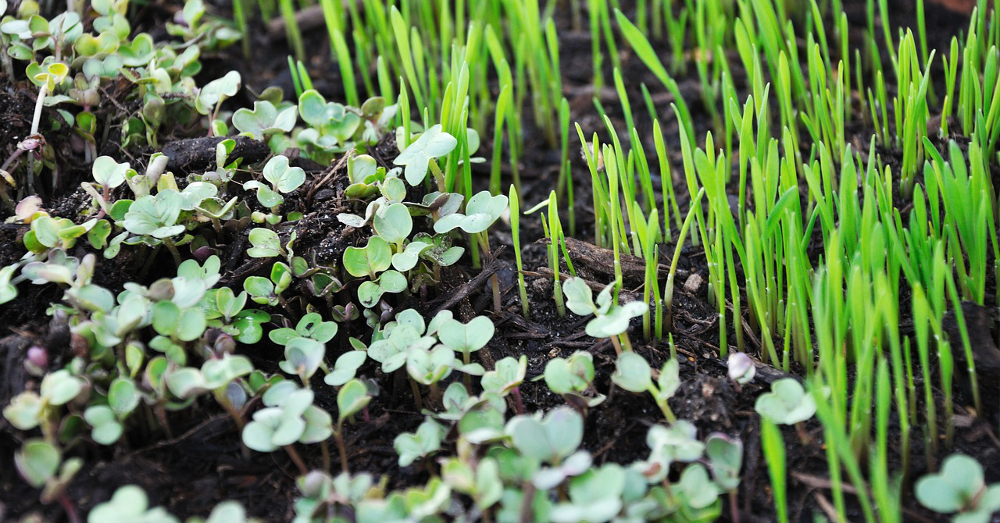
Swapping Lettuce for Sprouts and Microgreens Can Help You Meet Several Daily Vitamin Requirements
Many of the benefits of sprouts and microgreens relate to the fact that, in their initial and early phase of growth, the plants contain more concentrated amounts of nutrients. As a result, you need to eat far less, in terms of amount, compared to a mature plant.
March 13, 2017 | Source: Mercola.com | by Dr. Joseph Mercola
When you grow your own vegetables and notice the tender, young plants emerging from the earth, you may be surprised to learn that not only is it OK to harvest them while they’re still only a week or two old, but these sprouts and microgreens actually offer superior nutrition.1,2,3
Many of the benefits of sprouts and microgreens relate to the fact that, in their initial and early phase of growth, the plants contain more concentrated amounts of nutrients. As a result, you need to eat far less, in terms of amount, compared to a mature plant.
Sprouts, Microgreens and Baby Greens
Once the sprout starts to grow — but well before it reaches maturity — it’s considered a microgreen. Sprouts may be harvested within just a few days or a week of growth, while microgreens are typically harvested after two to three weeks, when they’ve reached a height of about 2 inches.
“Baby greens” are microgreens allowed to grow to a height of about 4 inches before harvesting. All of these — sprouts, microgreens and baby greens — are packed with higher densities of nutrients than full-grown vegetables.
As noted in the book, “Microgreens: Novel, Fresh and Functional Food to Explore All the Value of Biodiversity:”4
“Microgreens are … increasingly used by haute cuisine chefs to prepare gourmet dishes intended to satisfy the needs of modern consumers, more and more health conscious and particularly attentive to their health, diet and food quality.
Although [they] are often used with the main aesthetic purpose of garnishing dishes, microgreens also have a very good nutritional profile and … are considered ‘functional foods’ or ‘super foods’ as … they can also provide bioactive compounds able to improve some functions of the organism and/or reduce the risk of diseases.”
For example, research5 shows red cabbage microgreens impart more polyphenols and glucosinolates that help optimize your cholesterol levels and lower liver triglycerides.
Benefits of Sprouts
Essential fatty acids heighten and the protein quality of several vegetables improves when sprouted.
Sprouts can also contain up to 100 times more enzymes than their full-grown counterparts, which allow your body to extract higher levels of vitamins, minerals and other nutrients from other foods, and help protect against chemical carcinogens to boot.6
Minerals also bind to proteins, making them more bioavailable. Alkaline minerals such as calcium and magnesium help balance your body chemistry for both weight loss and better health overall.
Moreover, sprouting makes nuts, grains and seeds more digestible by breaking down anti-nutrients, enzyme inhibitors and lectins that can make the full-grown food hard to digest.7 Ditto for compounds known to cause gas in legumes.
A single day of soaking and sprouting the seeds can reduce anti-nutrients by 90 percent.
Another major benefit is that sprouts are easy and inexpensive to grow at home. They’re a particularly excellent choice during winter months, when outdoor gardening is limited or ruled out. Another major benefit is that you don’t have to cook them.
